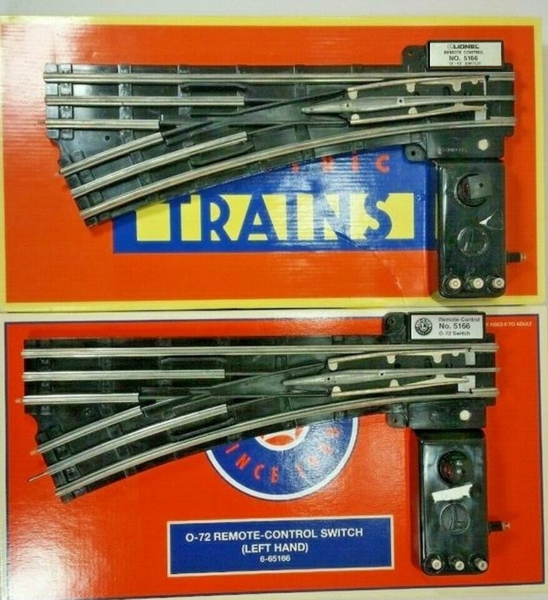The 5165 and 5166 turnouts have sloppy point rails that sag under the weight of the loco. The loco wheel flanges ride up over the point rails so the loco derails. Some that of mine also had a warp that caused the turnout to act as a speed bump tossing locos at speed off the rails. Diesel trucks could pass through these most of the time but steamers had to travel at slow speeds. My problem turnouts were purchased in the late '80s. Lionel may have improved the manufacture in different years, but I recommend you avoid them for mainline use.
The pre-war turnouts provide reliable running if you can find them.
K-Line SuperSnap turnouts solved my derailing problems. Unfortunately, the limit switches in the switch motors are giving me problems a couple of decades after purchase. If you can find them in new condition, they are good for your reversing loops. Caveat: the crossing rails sometime contact the frog casting causing sparking and shorts as the loco passes through. There are posts on this forum describing correcting that - black electrical tape over the rail is easiest.
RossPlate tinplate switches provide reliable running and operation. The DZ1000 switch machine struggles to throw the tinplate points consistently unless I increase to switch motor voltage to 18 or 19v (the higher than recommended voltage is for short duration, I haven't had a motor fail yet). If you want to stick with strictly tinplate trackage, RossPlate are the best choice. You'll have to wire up the non-derailling function with insulated rails.
For non-tubular switches you have to adapt to tubular, Ross and Lionel Fastrack provide reliable running. For the simplest off-the-shelf plug and play solution, use a Fastrack switch and three tubular adapter tracks for your reversing loop.











